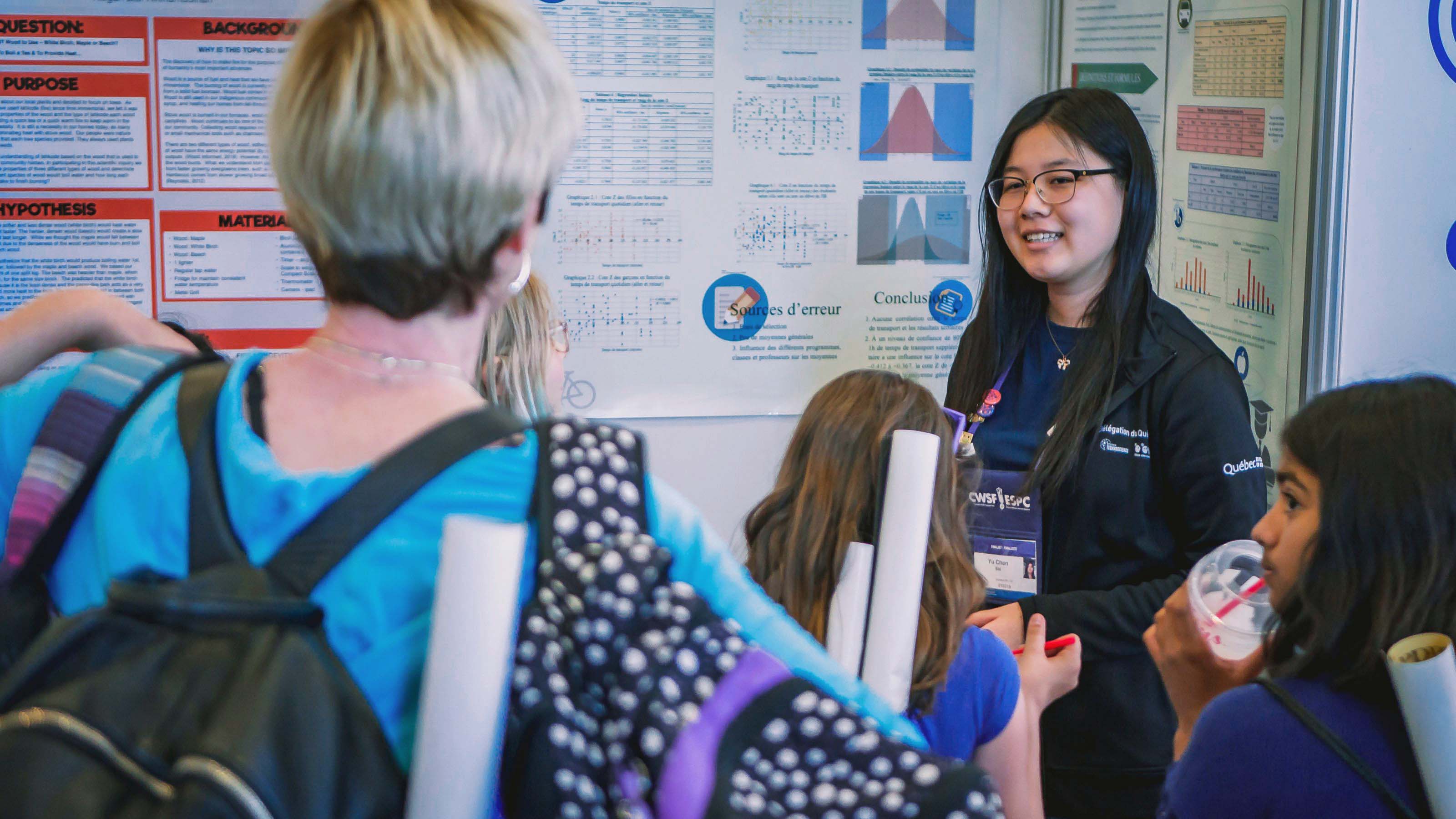As a collaborator on James Pinfold’s MoEDAL project in the Department of Physics in the Faculty of Science, visiting scholar and physicist Pierre-Philippe Ouimet continues to make significant contributions in his field – the latest part of an academic career that was inspired by science fairs. In Grade 12, Ouimet was part of a team at an Edmonton regional science fair presenting their attempt to re-create Fleischmann and Pons' 1989 cold fusion experiment. As part of his project, he met a professor from the Department of Chemistry at the U of A who agreed to mentor Ouimet, leading to the opportunity for Ouimet to stay in Edmonton and attend University of Alberta for his undergraduate degree.
Ouimet will be attending the Canada Wide Science Fair (CWSF) in Edmonton in May 2023, this time as Chief Judge. The role and event mean a lot to Ouimet as an opportunity to discover the best and brightest young minds in science, technology, engineering and math. "I have been told many times by colleagues that many CWSF projects are master’s thesis-level quality,” Ouimet says. He recalls one year when a student with a top-ranked physics project confidently answered questions Ouimet knew would stump his own students. “It was quite clear that the student had a very deep understanding of physics, and they were only 15 years old.”
With the event in Edmonton this year – the first in-person CWSF since 2019 – the U of A community has a firsthand opportunity to connect with these future scholars. PhD candidates and anyone with a PhD, PEng, MEng, MSc, MD, DDS degree or designation with professional experience in a related field are invited to apply as judges. Judges have the opportunity to meet students who might end up playing a key role in their labs, classrooms and businesses.
"One of the reasons that we need highly qualified judges is we need to identify the students who made significant, novel contributions to a project that might have been led by a professional," Ouimet says. "We also see a lot of progression year to year from students. They might start with an idea, and then years later have a functioning prototype with real world potential."
Matina Kalcounis-Rueppell, dean and vice provost of the College of Natural and Applied Sciences, encourages faculty in her portfolio and across the institution to participate as judges.
“Professionals involved in judging will have be able to interact with to Canada’s top young STEM minds,” says Kalcounis-Rueppell. “The students attending CWSF represent some of the most creative, dedicated, and inspired post-secondary education candidates in the country. It is a unique opportunity for the U of A to showcase our leading research and education programming to students from across Canada.”
Ouimet says many previous CWSF winners have received patents, gone on to successful academic careers and produced innovations with real-world applications — including innovations in spinal cord surgery, cancer treatment and support for people living with Parkinson’s disease. "What keeps me interested [in CWSF] is meeting young people who have the same passion and dedication for their areas of interest as I do in my own field of physics," Ouimet says. "In many ways, it gives me hope for the future."
Learn more about participating as a judge for CWSF, and register.
